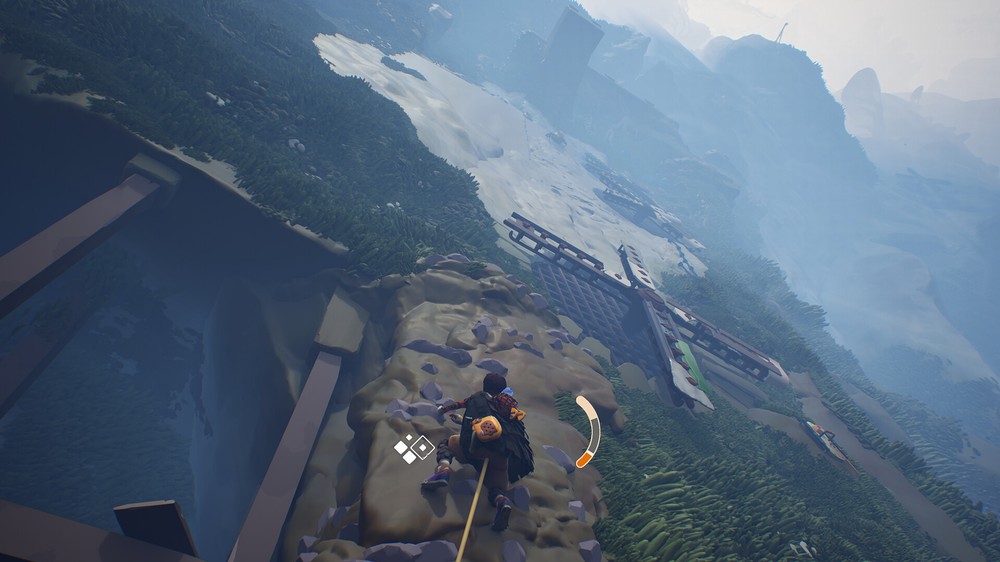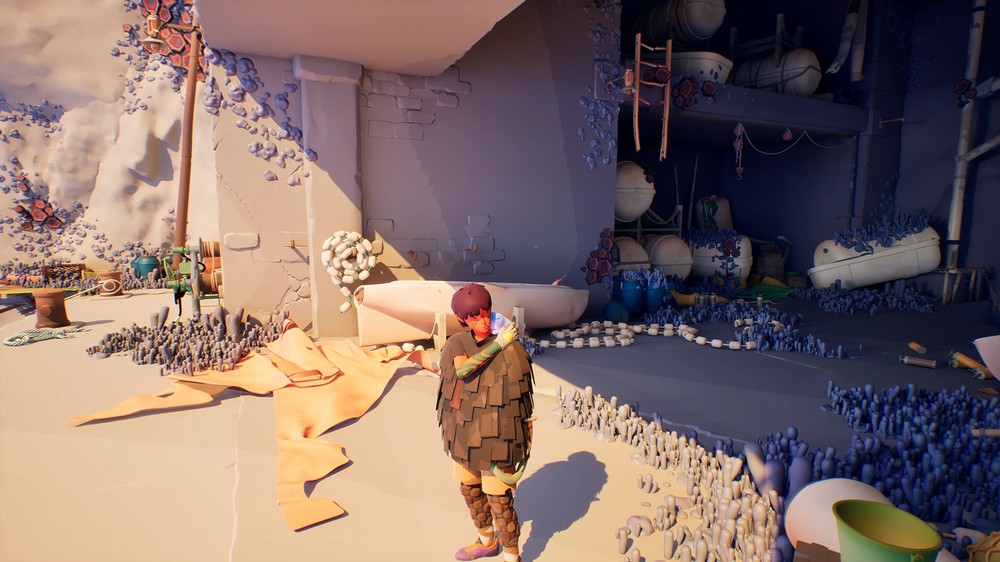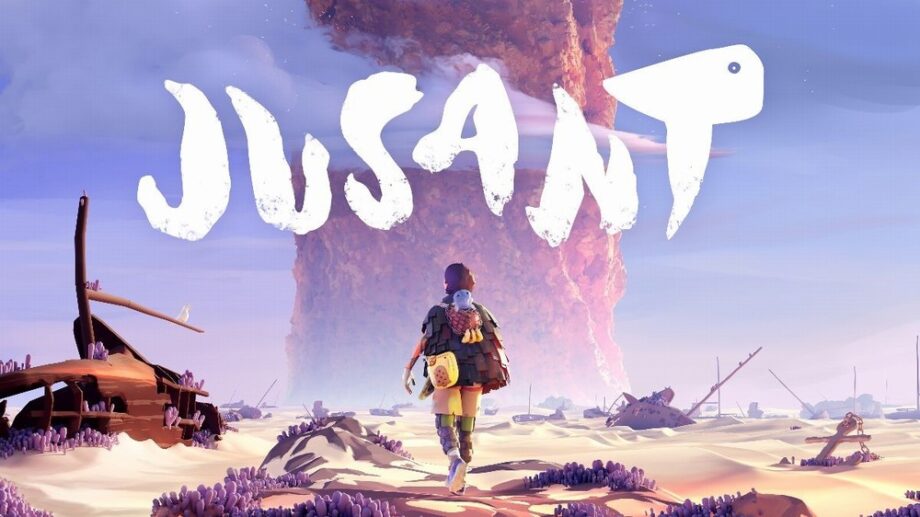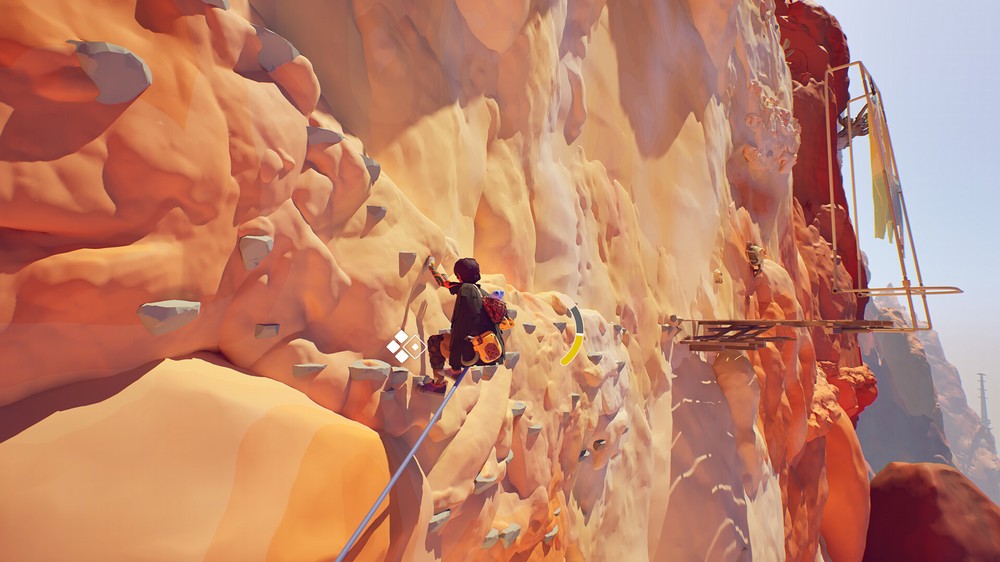Earlier this summer I had the chance to preview Jusant, one of the more original and unique games to come from DON’T NOD. I was hooked on the game long before reaching the end of my preview copy, and it was so much fun I didn’t even mind having to replay that entire first section over again when it was time to play and review the final release.
A brief opening cinematic welcomes you to a dry and desolate world void of water, and when it’s all over our young climber is left at the base of a towering spire reaching beyond the clouds. You’re equipped with a climbing rope, three pitons, and Ballast, an adorable companion creature made from water; a rare commodity in this world. Most of the narrative is trickled out through discoverable notes, diaries, and letters that will fill in the history of your dehydrated planet and expand the lore of its inhabitants. There is a LOT to read here. I tried to make an effort to read everything but gave up halfway through. Some notes are lengthy series of messages back and forth and all that reading really sucks the momentum out of the game. Thankfully, you can always go read all that stuff in the collectibles menu later so you can keep exploring.
And exploration is what it’s all about in Jusant, with some of the finest climbing controls that you would expect to find in a game that is mostly climbing. The big deal here is with the individual left/right grips using corresponding triggers, and while this has been done many times before in other games, no one has ever got it feeling as good as it does in Jusant. It’s not just the gripping but also that analog stick movement that mimics those flailing limbs on our climber. I had at least one flashback to playing Crazy Climber in an arcade in the 80’s, as I navigated my way up a variety of branching paths leading to key areas and dead-end secrets.
Adding to the realism is your ability to set temporary anchor points, a technic you will certainly need to access those hard-to-reach areas or just create a safety point before attempting a daring leap. And to add just a bit of extra tension, you’ll be happy to know you have limited stamina, so keep an eye on that gauge as you climb and scramble between ledges where it will automatically refill. There is a slow progression of difficulty that seems to match the natural learning curve of the game. New oddities are added regularly which incentivizes moving on, and then the game starts mixing and chaining these to create organic obstacles courses.
 Jusant does a great job of hinting at your path using natural terrain and objects, and there appear to be multiple short detours and paths in certain areas; some leading to a collectible and others just offering up a reason to replay later to experience the path not chosen. The first few chapters have you climbing the exterior of the spire, often in debilitating heat that can affect your stamina. There are brief excursions into interior areas, but it won’t be until the final chapters where you will actually find yourself in the seemingly magical interior of the mountain and all the spectacle it has to offer.
Jusant does a great job of hinting at your path using natural terrain and objects, and there appear to be multiple short detours and paths in certain areas; some leading to a collectible and others just offering up a reason to replay later to experience the path not chosen. The first few chapters have you climbing the exterior of the spire, often in debilitating heat that can affect your stamina. There are brief excursions into interior areas, but it won’t be until the final chapters where you will actually find yourself in the seemingly magical interior of the mountain and all the spectacle it has to offer.
For those who enjoy collectibles, there should be more than enough to keep you coming back to find what you missed. The chapter select menu shows what you missed, but it will take very thorough exploration to actually find it. We’re talking 50+ notes, 12 shells, 20 cairns, and 12 wall paintings. Thankfully, Ballast has a useful chant ability that will illuminate collectibles and the exit. I thought I was pretty thorough in my initial playthrough, but I ended my first game with just over half the collectibles.
 The sheer scope of design and scale of this world was not apparent to me until I realized just how much I had missed. There must be entire sections of the mountain I still need to find, and thanks to the wonderful gameplay, I look forward to many more trips up the mountain. If I had to make any criticism it would be just how short the game is, but that’s because of how good it is. And yes, Jusant can get repetitive; just like climbing a real mountain hand over hand. And lastly, there is no threat or real sense of danger. You are always tethered to a main anchor point and have three pitons you can use to “checkpoint” your way to the next anchor.
The sheer scope of design and scale of this world was not apparent to me until I realized just how much I had missed. There must be entire sections of the mountain I still need to find, and thanks to the wonderful gameplay, I look forward to many more trips up the mountain. If I had to make any criticism it would be just how short the game is, but that’s because of how good it is. And yes, Jusant can get repetitive; just like climbing a real mountain hand over hand. And lastly, there is no threat or real sense of danger. You are always tethered to a main anchor point and have three pitons you can use to “checkpoint” your way to the next anchor.
Jusant looks incredible with its stylized cel-shaded vibe, charming character designs, fluid and realistic animations, and some fantastic lighting and shadows. The draw distance and level of detail was most impressive with virtually no object popping, and it is both dizzying and rewarding to look down and see your last hour of play. The game runs flawlessly on my 4090 at full 4K and 120fps, and DLSS3 support ensures Jusant will look and play great on a wide range of PC setups. There is no spoken dialogue, but the environmental sounds of wind and rain, and the physical sounds of crumbling rocks and sprouting plants are excellent, and the music can only be classified as “inspirational”, adding to the Zen-like atmosphere of the game.
 At the core of Jusant is an intuitive control scheme that really connects you with your avatar, as you explore some of the most breathtaking and surreal environments ever created. There is also a major story being told behind the scenes for those with the desire to seek out all those bits of lore and the patience to read it all. Out now on PlayStation 5, Xbox Series and PC, Jusant has been one of the more memorable and enjoyable gaming experiences of this year, and I look forward to many more hours of mountain exploration and adventure.
At the core of Jusant is an intuitive control scheme that really connects you with your avatar, as you explore some of the most breathtaking and surreal environments ever created. There is also a major story being told behind the scenes for those with the desire to seek out all those bits of lore and the patience to read it all. Out now on PlayStation 5, Xbox Series and PC, Jusant has been one of the more memorable and enjoyable gaming experiences of this year, and I look forward to many more hours of mountain exploration and adventure.












